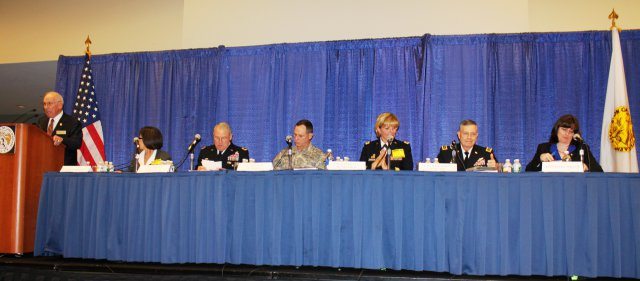During the recent 2012 Association of the United States Army’s Annual Meeting and Exposition, members of the Institute of Land Warfare’s “Thinking Past Tomorrow — Where is the Army Going?” panel described the Army of the future, with a focus on the concepts and capabilities needed to meet future unknown threats.
“We, as an Army, have to develop a deep concept,” said Lt. Gen. Keith Walker, deputy commanding general of Futures and director of U.S. Army Training and Doctrine Command’s Army Capabilities Integration Center. “That means looking out as far as 2030. The Army has not had a ‘deep’ concept in quite a while.”
As the Army examines long-term planning, changes to doctrine and training, future threat assessments, capability gaps and a whole host of advancements in technology, the goal is to mitigate and reduce security threats to the future forces — providing Soldiers with increased sustainability and mobility.
“We must be more efficient in everything we do,” said Heidi Shyu, assistant secretary of the Army, Acquisition, Logistics and Technology, listing numerous ways the Army is upgrading Soldiers’ battle gear while decreasing the weight they must carry to complete missions.
As the Army begins to implement the latest Network Integration Evaluation, which Shyu described as the “adaptive and evolutionary approach to designing, integrating and maturing the Army’s tactical network and capabilities,” leaders are already seeing positive results.
“[Network Integration Evaluation] brings Soldiers, materiel developers, engineers and testers together to test new technologies in a combat environment,” added Walker. “We give the Soldiers a chance to use new equipment and tell us what they think — and they don’t hold back.”
By adapting and modernizing how the Army operates and developing field network technologies asynchronously, the Army has cut costs and bureaucratic processes that have slowed down progress in the past.
“The sooner we can get new technologies in the hands of our Soldiers, the sooner we can stop doing things that are [ineffective],” said Walker.
As the Army moves forward, the panel’s experts acknowledged the future is still unknown, but one thing is certain: with the Network Integration Evaluation, the Army has a new way of doing business and the change will be for the better.










